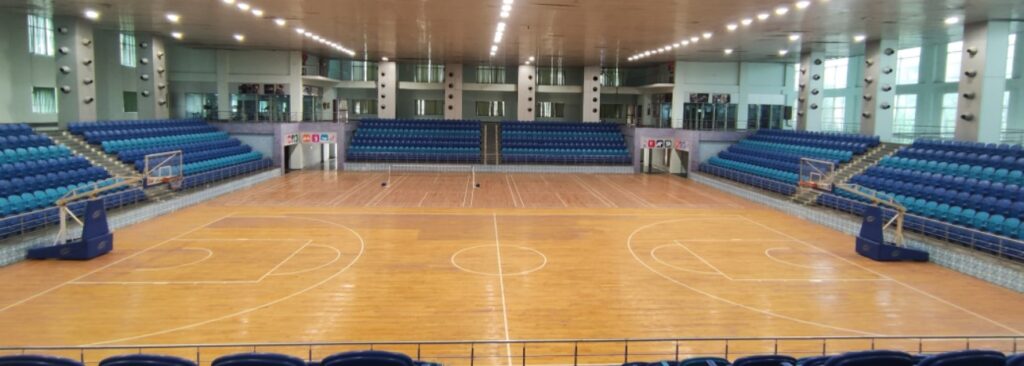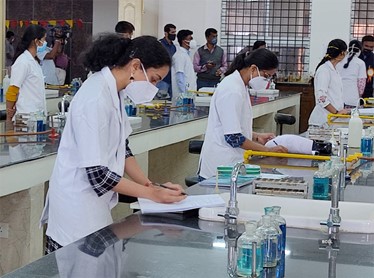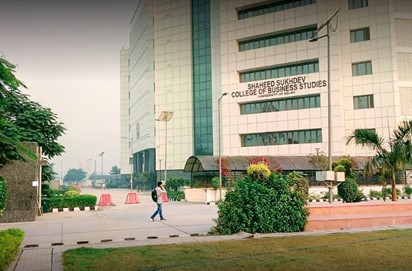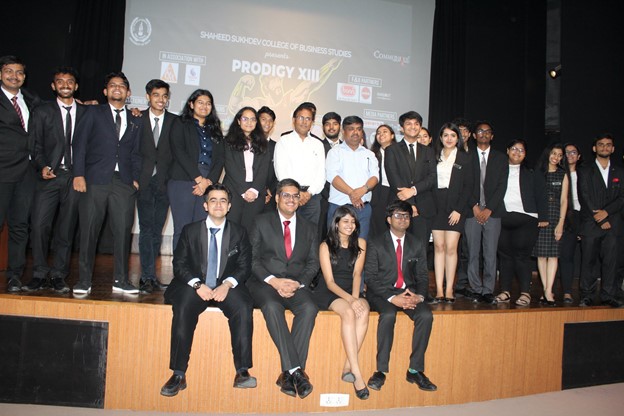The University of Delhi (DU) is renowned for its exceptional academic programs and diverse range of courses. As a premier institution in India, DU offers numerous courses across various disciplines with varying difficulty and cost. While the cost of education is an important factor for many students and their families, it is worth exploring the most expensive courses at DU to understand the investments required for specific fields of study.
Factors Affecting the Cost of Most Expensive Courses at DU
First of all, let us look into some factors that affect the most expensive courses at DU with which we can gain insight into the investments required for specific fields of study.
Infrastructure and Facilities
One of the primary factors influencing the cost of courses at DU is the infrastructure and facilities provided to students.
Disciplines such as medicine, engineering, and sciences often require specialized laboratories, research centres, and equipment. The cost of establishing and maintaining these facilities, including cutting-edge technology, research materials, and safety measures, significantly contributes to the factors affecting the cost of such courses.
Additionally, courses with practical components may require field trips, industry visits, or studio spaces, further increasing the cost.

Faculty Expertise and Salaries
Another factor influencing the Most expensive courses at DU is the quality of the faculty and their expertise. DU attracts highly qualified and experienced professors and instructors across various disciplines.
These educators contribute to the overall reputation and academic excellence of the institution. The expenses associated with faculty compensation contribute to the overall cost of courses at DU.
Research and Development
Courses that emphasize research and development, such as sciences and technology-related fields, often incur higher costs.
Research-oriented courses require funding for research projects, laboratories, equipment, and materials. The investment in research infrastructure enables students to engage in cutting-edge research and contribute to advancements in their respective fields.
Additionally, the costs of maintaining subscriptions to scholarly journals, databases, and access to research resources impact the most expensive courses at DU.
Industry Partnerships and Internships
DU places significant importance on providing students with industry exposure and practical experience through internships, apprenticeships, and collaborations with corporate partners. This engagement with industries enhances students’ skills, knowledge, and employability.
However, establishing and maintaining strong industry partnerships, facilitating internships, and organizing industry-specific events involve additional costs that contribute to the overall cost of courses at DU.
Field-specific Requirements and Materials
Certain courses at DU, such as fine arts, design, or architecture, require specialized materials, tools, and equipment. These materials can be expensive, adding to the overall cost of the courses, hence determining the most expensive courses at DU.

For instance, art supplies, drafting tools, software, or 3D printing equipment may be necessary for students in these disciplines. The procurement and maintenance of these field-specific requirements contribute to the higher tuition fees.
Demand and Supply Dynamic
The demand for certain courses and the limited availability of seats can impact the cost of the most expensive courses at DU. For Eg- the fees for professional programs like medicine, engineering, and management, where the competition for admissions is intense are higher.
The demand-supply dynamics influence the cost as institutions strive to maintain the quality of education and meet the expectations of students seeking admission to these sought-after programs.
Which are the Most Expensive Courses at DU?
With this being said, some of the most expensive courses at DU are MBBS (Medical) and BMS (Bachelor of management studies).
Here’s a detailed explanation as to why these are the most expensive courses at DU.
MBBS
The MBBS program at the University of Delhi is a highly esteemed and sought-after course. It is designed to equip students with the necessary knowledge and practical skills to become competent medical practitioners.
The program spans five and a half years, including a one-year mandatory internship. During this time, students undergo comprehensive training in various medical disciplines, ranging from anatomy and physiology to pharmacology and clinical practice.

Why is MBBS cost high at Delhi University?
Reasons for the High Cost of MBBS Courses at DU:
Infrastructure and Facilities
The field of medicine requires extensive infrastructure and state-of-the-art facilities to facilitate effective learning and practical training. DU spares no expense in providing well-equipped laboratories, research centres, and teaching hospitals where students gain hands-on experience.
The cost of maintaining these facilities, including the latest medical equipment, advanced simulation technology, and up-to-date resources, contributes significantly to the high cost of MBBS courses at DU.
Faculty Expertise and Clinical Training
DU ensures that the MBBS program is delivered by highly qualified and experienced faculty members who possess specialized expertise in their respective fields.
These experts play a crucial role in imparting theoretical knowledge, conducting clinical demonstrations, and supervising practical training sessions. Giving remuneration to these experts contribute to the overall cost of MBBS courses at DU.
Practical Training and Clinical Exposure
Training and clinical exposure are integral components of the MBBS program. DU places great emphasis on providing students with hands-on experience in a clinical setting, enabling them to apply theoretical knowledge to real-world medical scenarios.

The associated costs of coordinating extensive clinical rotations, affiliations with hospitals, and facilitating practical training experiences contribute to the higher expenses of the program.
Research and Development
As a leading educational institution, DU promotes a culture of research and development. The MBBS program encourages students to engage in scientific inquiry, explore medical advancements, and contribute to the field.
The university invests in research laboratories, state-of-the-art equipment, and research grants, allowing students to conduct meaningful research and present their findings at national and international forums. These research-related expenses contribute to the overall cost of the program.
BMS (Bachelor in Management Studies)
The BMS program at the University of Delhi is designed to provide students with a strong foundation in business and management. It equips them with the necessary skills and knowledge to navigate the complexities of the corporate world.
The program typically spans three years and covers subjects such as marketing, finance, human resource management, organizational behaviour, and strategic management.

Why is BMS cost high at Delhi University?
Reasons for the High Cost of BMS:
Faculty Expertise and Industry Exposure
The BMS program at DU boasts a highly qualified faculty team with extensive industry experience.
The recruitment and retention of such experienced faculty members, along with their continuous professional development, contribute to the overall cost of management courses at DU.
Infrastructure and Technological Resources
Management education requires modern infrastructure and technological resources to facilitate effective learning and maintenance of those facilities.
DU invests in state-of-the-art classrooms, computer labs, libraries, and other facilities that enhance the educational experience for BMS students.
Industry Collaborations and Networking Opportunities
The BMS program at DU emphasizes industry collaborations, internships, and networking opportunities.

Establishing and maintaining partnerships with renowned companies and organizations requires dedicated resources and efforts, contributing to the higher costs of management courses at DU.
Study Materials and Guest Lectures
Management education involves the use of various study materials, including textbooks, case studies, research papers, guest lectures by industry experts and online resources.
The cost of procuring study materials and organizing guest lectures adds to the overall cost of management courses at DU.
Training and Development Programs
To prepare BMS students for the competitive job market, DU offers training and development programs that focus on enhancing communication skills, leadership abilities, teamwork, and problem-solving capabilities.
These programs often involve external trainers and experts, workshops, seminars, and personality development activities which adds to the higher cost of management courses at DU.
Conclusion
Several factors contribute to the cost of courses at DU. These include infrastructure and facilities, faculty expertise and salaries, research and development, industry partnerships, field-specific requirements, accreditation and affiliations, as well as demand and supply dynamics.
Some of the most expensive courses at DU are medical research and science and management studies. Students and their families need to consider the factors when evaluating the cost-benefit ratio of pursuing courses at DU.















